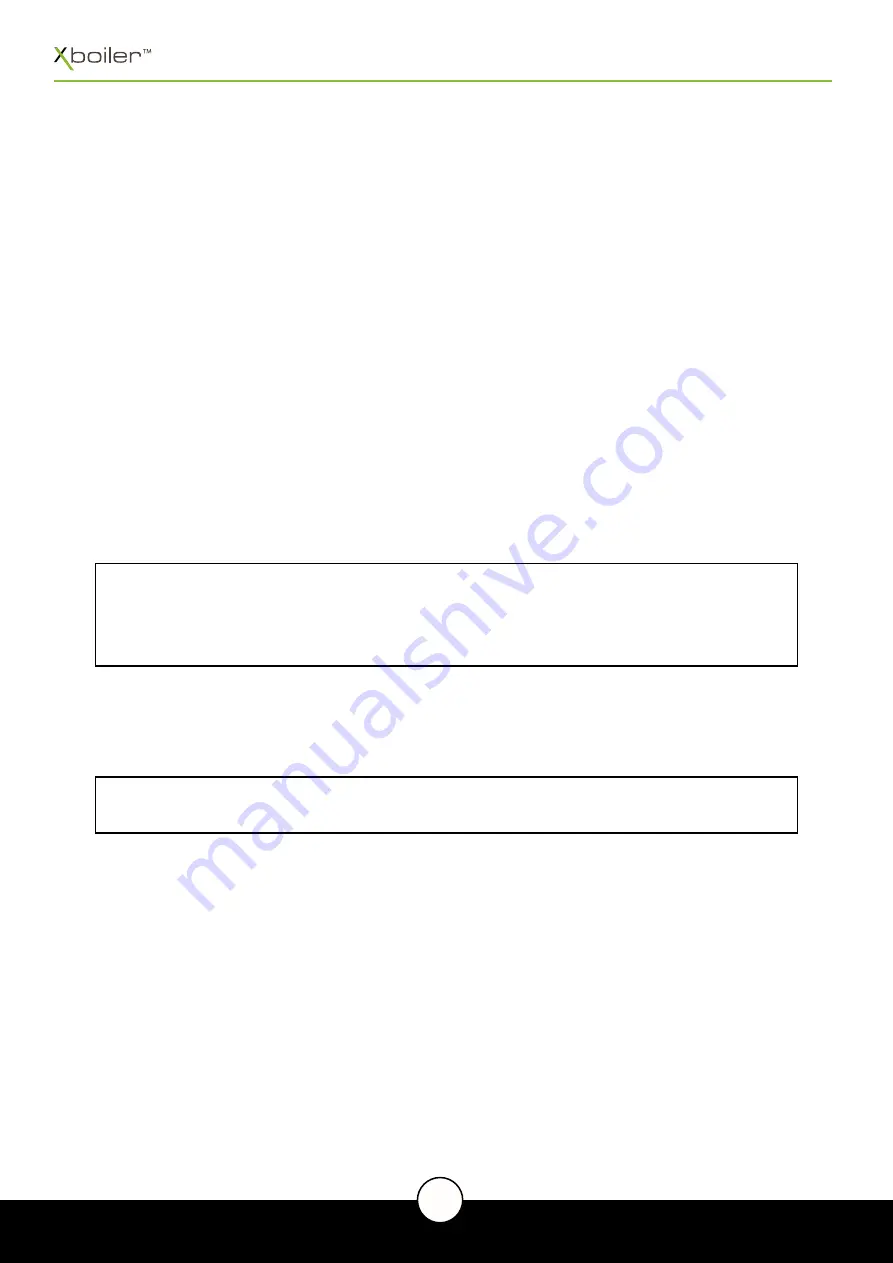
Instruction Manual
19
3.6.2 System cleaning and the treatment of water for filling the C.H. system
The boiler is the most expensive part of the C.H. system. It is, therefore, necessary to protect components of the system
like heat exchangers and other parts against harmful conditions such as limestone deposition and corrosion of internal walls
and surfaces. Correct C.H. circuit preparation relies on performing two operations: cleaning the C.H. system and treating
the water that fills the system.
System cleaning
In a new boiler installation, it is possible to find remains from industrial process soldering and welding, and residues from
flux, oil, and grease among others. Older installations usually have products of corrosion in them. It is necessary to clean
up the C.H. system with water first to remove any remains before the boiler is mounted. Afterward, the system should be
cleaned with appropriate chemicals. For example, Cleaner F3 from Fernox in new installations and cleaner F5 for old and
contaminated systems. Following that, the installation should be rinsed out with water.
Treatment of water for filling the central heating system
For filling the C.H. system, it is recommended to use water with parameters: pH 6,5- 8,5, hardness < 10 n (~ 18 F). Do not use
demineralised or distilled water. To protect against limescale deposition and corrosion, it is recommended to use a special
inhibitor. Heat transfer fluid HP-5 or antifreeze liquid can also be used. If the water hardness is very high, HP-5 effectively
reduces the risk of heat exchanger calcification.
Low-temperature circuits
In low-temperature areas, it is recommended to treat the filling water using a heat transfer fluid such as HP-5 or Fernox
AF10 biocide.
Filtration technique
Additionally, in order to ensure the quality of the heating system’s operation, it is recommended to mount modern filters,
which work on the principle of magnetic and cyclone effect, for example, Fernox TF1 filter.
NOTE!
•
The method and amounts of specific products used for system cleaning and water treatment should be in accordance
with the product manufacturer’s instruction.
•
The above steps should be performed by an authorised installer or service technician.
NOTE!
It is recommended to install a water filter in the connection with the domestic water supply. This filter is not
included in the standard boiler equipment.
3.7 CONNECTION OF THE BOILER TO A DOMESTIC HOT WATER SYSTEM
It is recommended to install cut-off valves on a domestic hot water system which will enable easier maintenance and
service.
3.8 CONDENSATE OUTLET
Condensation formed during the combustion process must be drained according to the following requirements:
•
Installed condensate drain must be made of corrosion-resistant material.
•
Connection for draining the condensate cannot be blocked.
•
To facilitate the draining of water condensing from the flue gas, all horizontal flue pipes must be installed with a fall
of 3° (52mm / m).
3.9 FLUE GAS OUTLET
The X Boiler can be installed as a B-type appliance, for which the air needed for combustion is taken from the room where
the boiler is installed. If installed as a C-type appliance, the air needed for combustion is taken from outside the building.
Regardless of the source of air, provision needs to be made for the flue gas produced after combustion to escape. The flue
gas outlet system installation depends on the type of combustion.
Depending on local regulations, some types of flue gas installations might not be allowed. Therefore, the regulations should
be consulted before undertaking any flue gas projects. To ensure the boiler functions properly with the flue-gas outlet
system installed, the appropriate pipe dimensions in terms of diameter, maximum length, and elbow resistance should be
used. See Tables 3.8.1.1. and 3.8.2.1 for appropriate pipe dimensions depending on the installation.
















































